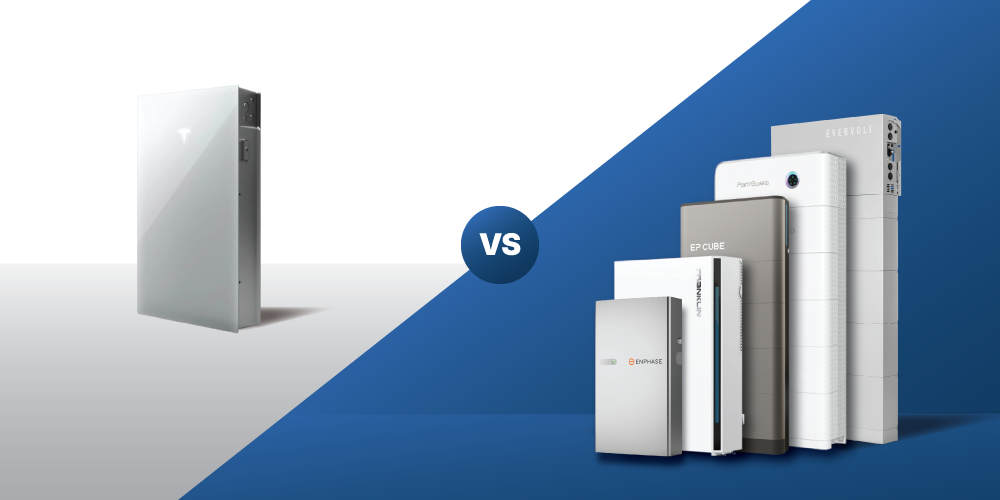Updated 3 weeks ago
5 Tesla Powerwall Alternatives in 2025 (Expert Picks)
Written by Catherine Lane Catherine LaneCatherine has been researching and reporting on the solar industry for five years and is the Written Content Manager at SolarReviews. She leads a dyna...Learn more

Why you can trust SolarReviews
SolarReviews is the leading American website for solar panel reviews and solar panel installation companies. Our industry experts have a combined three decades of solar experience and maintain editorial independence for their reviews. No company can pay to alter the reviews or review scores shown on our site. Learn more about SolarReviews and how we make money.
The Tesla Powerwall is one of the most popular solar batteries on the market. It’s cost-effective, powerful, and sleek, making it an excellent choice for many homeowners.
However, the Powerwall’s popularity can lead to substantial wait times, sometimes as long as six months, which can be a turn-off for many. It also doesn’t help that Tesla CEO Elon Musk has been at the center of significant political controversy, causing many to swear off all Tesla products, no matter how good they might be.
Whatever situation you’re in, there are plenty of reasons to seek out alternatives to Tesla’s battery. We’ve chosen five Tesla Powerwall alternatives for all different scenarios so you can get the energy storage option that fits your needs:
Best availability: Enphase IQ
Best low-cost alternative: Canadian Solar EP Cube
Best features and capabilities: FranklinWH aPower2
Best big-brand alternative: Panasonic EVERVOLT
Best power output alternative: PointGuard
5 Best Powerwall Alternatives
The best Powerwall alternative for you depends on your specific energy storage needs. Let’s take a closer look at our top picks so you can decide what’s right for you.
1. Enphase IQ batteries:
Best availability
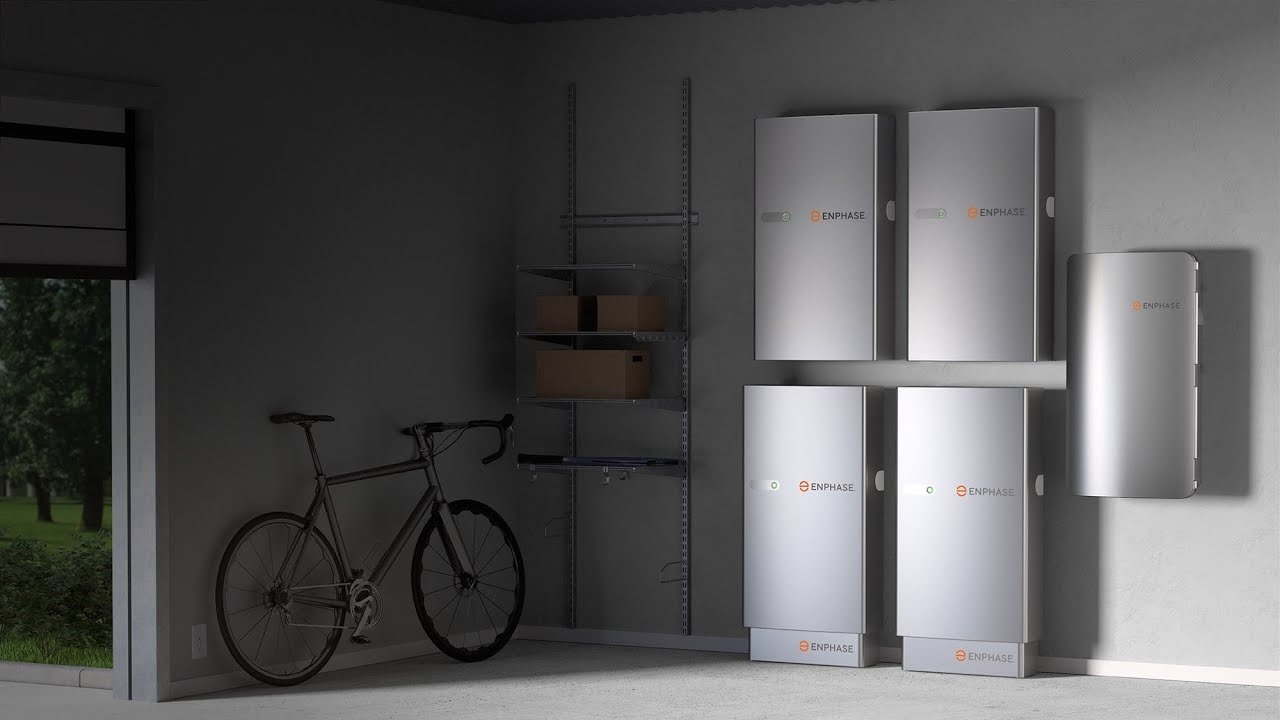
Image courtesy of Enphase
If Tesla’s wait times concern you, consider an Enphase battery. Not only are Enphase batteries high-quality and solid performers, they come from one of the most trusted brands in the home solar industry. According to our 2025 Solar Industry Survey, Enphase was the most used solar battery brand, with 74% of installers using them in their installations.
2. FranklinWH aPower 2
Best features and capabilities
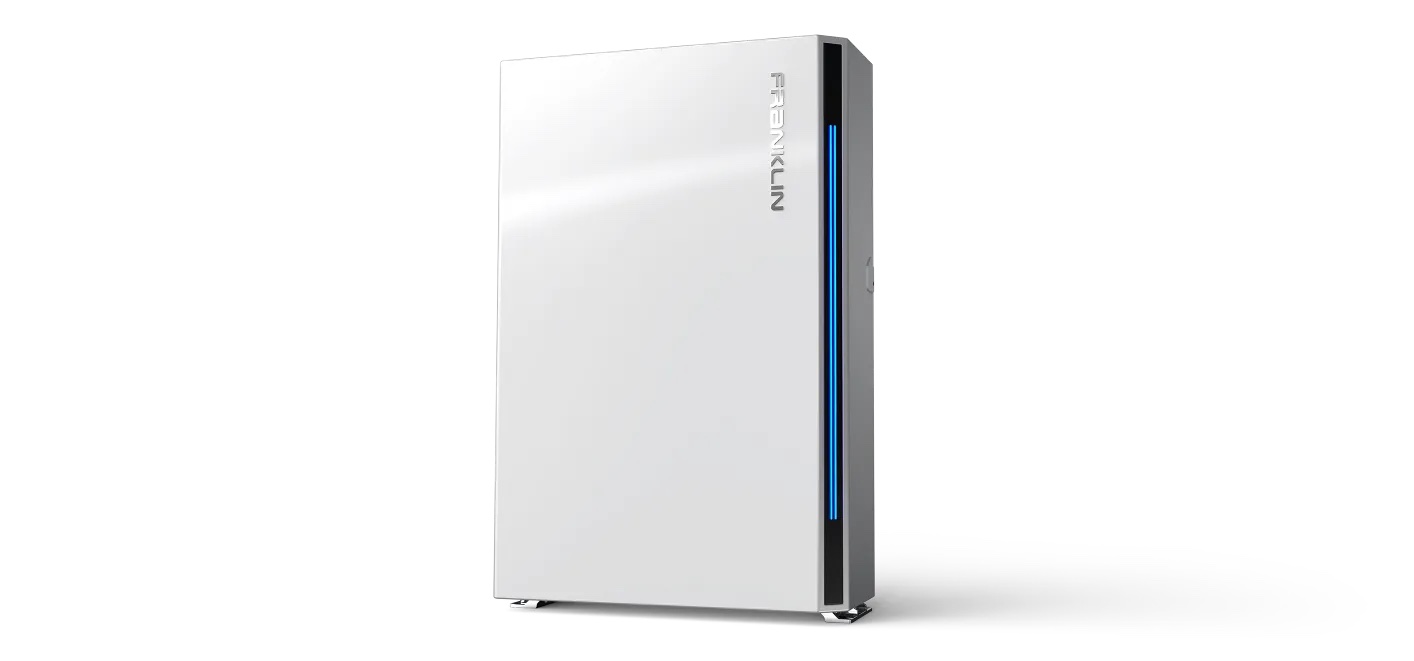
Image courtesy of FranklinWH
FranklinWH is quickly becoming a popular battery with solar installers. In 2024, it was the fourth most used battery by installers, according to our Survey. The popularity is not by accident — FranklinWH is a feature-rich option with smart battery management, and it’s compatible with popular equipment like Enphase and SolarEdge inverters, giving you more flexibility in your system design. Some of the unique features of the FranklinWH system include electric car charging and generator integration, black start capabilities, and vehicle-to-home power. Installers have also highlighted Franklin’s easy installation and commissioning.
3. Canadian Solar EP Cube
Best low-cost alternative
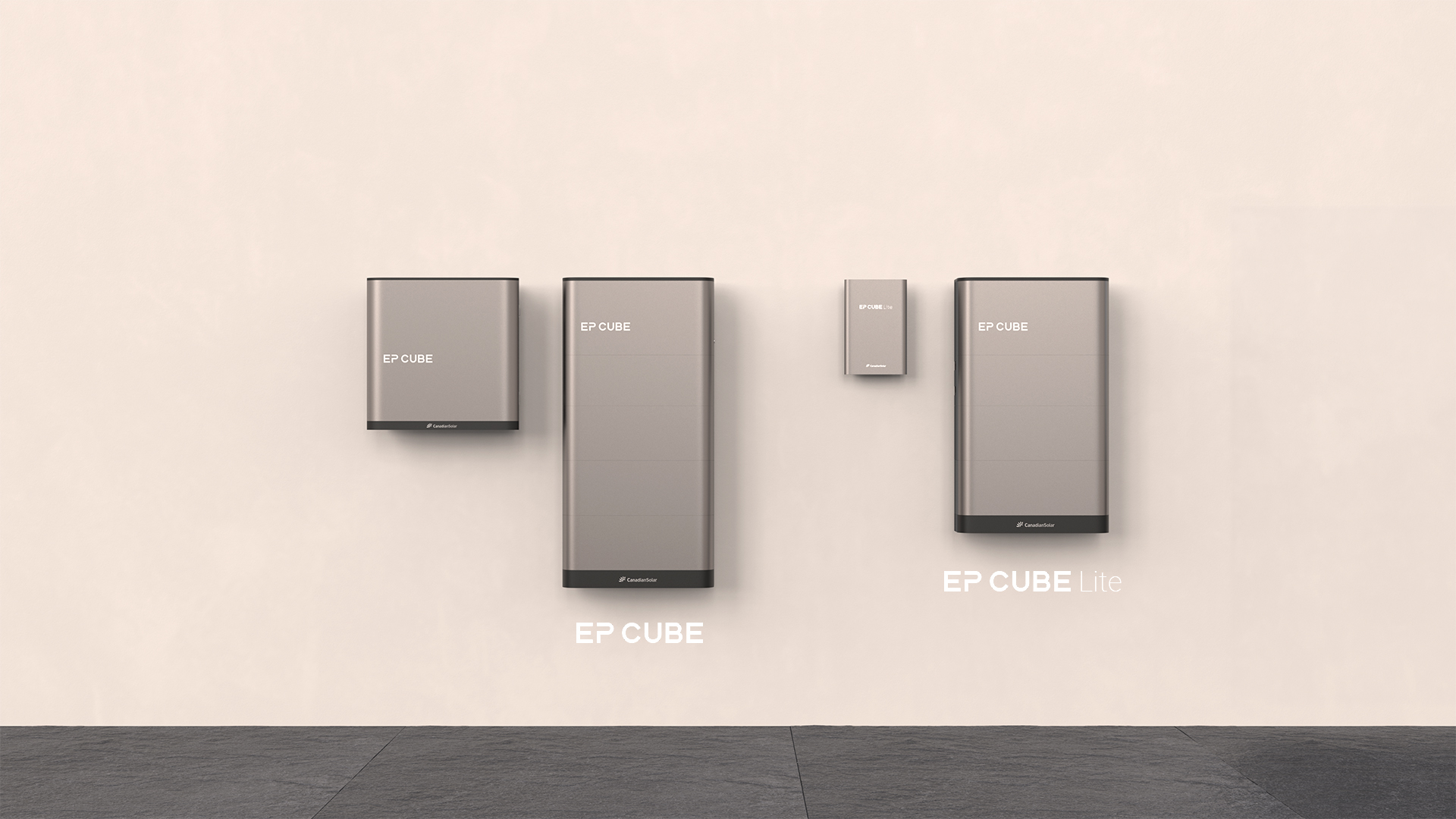
Image courtesy of Canadian Solar EP Cube
Many people opt for a Tesla Powerwall because of its low price point. Canadian Solar is another top home solar brand known for high-quality products that are reasonably priced. A Tesla Powerwall costs $16,800 on average to install. In contrast, the Canadian Solar EP Cube’s average price is closer to $12,000 for a similarly-sized system, making it a great Tesla Powerwall alternative for those who want the best financial value possible.
4. Panasonic EVERVOLT
Best big brand alternative

Image courtesy of Panasonic
Some homeowners like that the Tesla Powerwall comes with a degree of familiarity: they know the Tesla name, know that it’s a big company, and feel fairly confident that there’s a certain level of quality and reliability that comes with that. Panasonic can offer that same peace of mind without some of Tesla’s drawbacks. The EVERVOLT battery from Panasonic is a great option because of its modular design flexibility and excellent 12-year warranty. It’s a brand you already know, and it’s sure to meet your power needs.
5. PointGuard
Best power output alternative
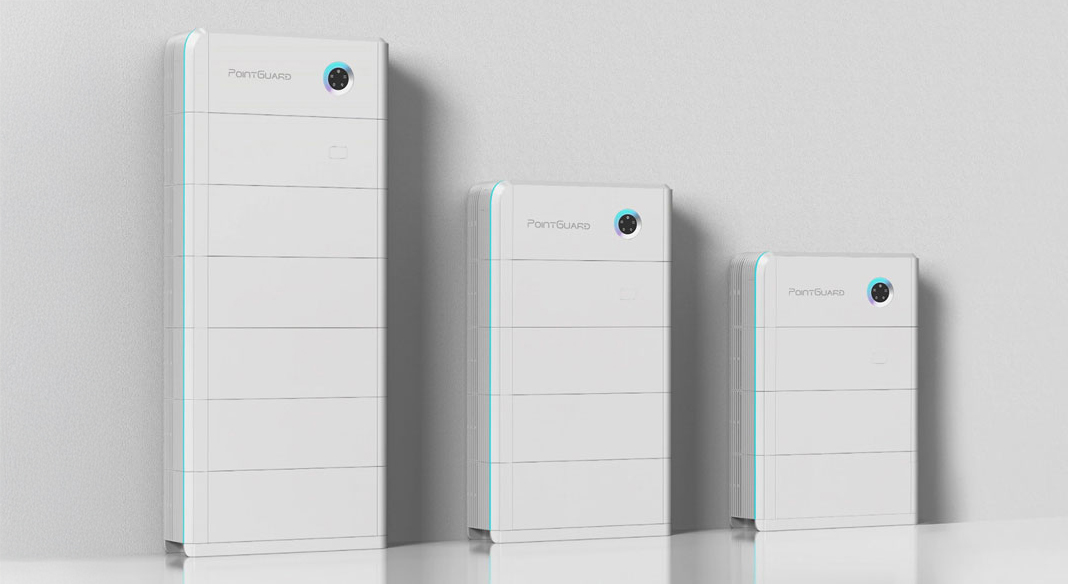
Image courtesy of PointGuard
One of the best features of the new Powerwall 3 is the high power output rating. At 11.5 kilowatts (kW), the Powerwall is one of the most powerful batteries available, especially at its price point. PointGuard offers models with 11.4 kW of continuous power output, ensuring you can run your power-hungry appliances just like you can with a Powerwall 3.
Tesla Powerwall alternatives comparison guide
Battery | Tesla Powerwall 3 | Enphase IQ 5P (3 modules) | FranklinWh aPower 2 | Canadian Solar EP Cube (5 Modules) | Panasonic EVERVOLT EVX-15 | PointGuard |
|---|---|---|---|---|---|---|
Usable capacity | 13.5 kWh | 15 kWh | 15 kWh | 19.9 kWh | 13.5 kWh | 13.44 kWh |
Continuous output | 11.5 kW | 11.52 kW | 10 kW | 7.6 kW | 7.6 kW | 11.4 kW |
Chemistry | LFP | LFP | LFP | LFP | LFP | LFP |
Warranty | 70% at 10 years or unlimited cycles | 60% at 15 years or 6,000 cycles | 70% at 12 years | 80% at 10 years or 6,000 cycles | 60% after 12 years or 6,000 cycles | 70% at 10 years |
Est. cost per kWh* | $752 | $821 | $844 | $551 | $810 | $582 |
*Estimated costs do not include the cost of installation, inverter costs included for DC batteries
How to figure out the right battery for your home
Even though we named the Tesla Powerwall the best battery of 2025, that doesn’t mean it’s the best for you. The right battery depends on your specific needs and what matters most to you. We recommend you consider why they want a solar battery and what you hope it accomplishes.
The best way to figure out which battery is right for you is to speak with multiple solar installation companies. Solar installers will give you an idea of what type of battery and features will help you reach your goals. By getting more than one quote, you can see a variety of pricing and equipment and get an idea of which company you trust the most.
That can seem overwhelming, but SolarReviews can help. We connect homeowners looking for solar batteries with reliable, pre-vetted solar companies in their area.
Solar battery resources
Catherine has been researching and reporting on the solar industry for five years and is the Written Content Manager at SolarReviews. She leads a dynamic team in producing informative and engaging content on residential solar to help homeowners make informed decisions about investing in solar panels. Catherine’s expertise has garnered attention from leading industry publications, with her work being featured in Solar Today Magazine and Solar ...
Learn more about Catherine Lane